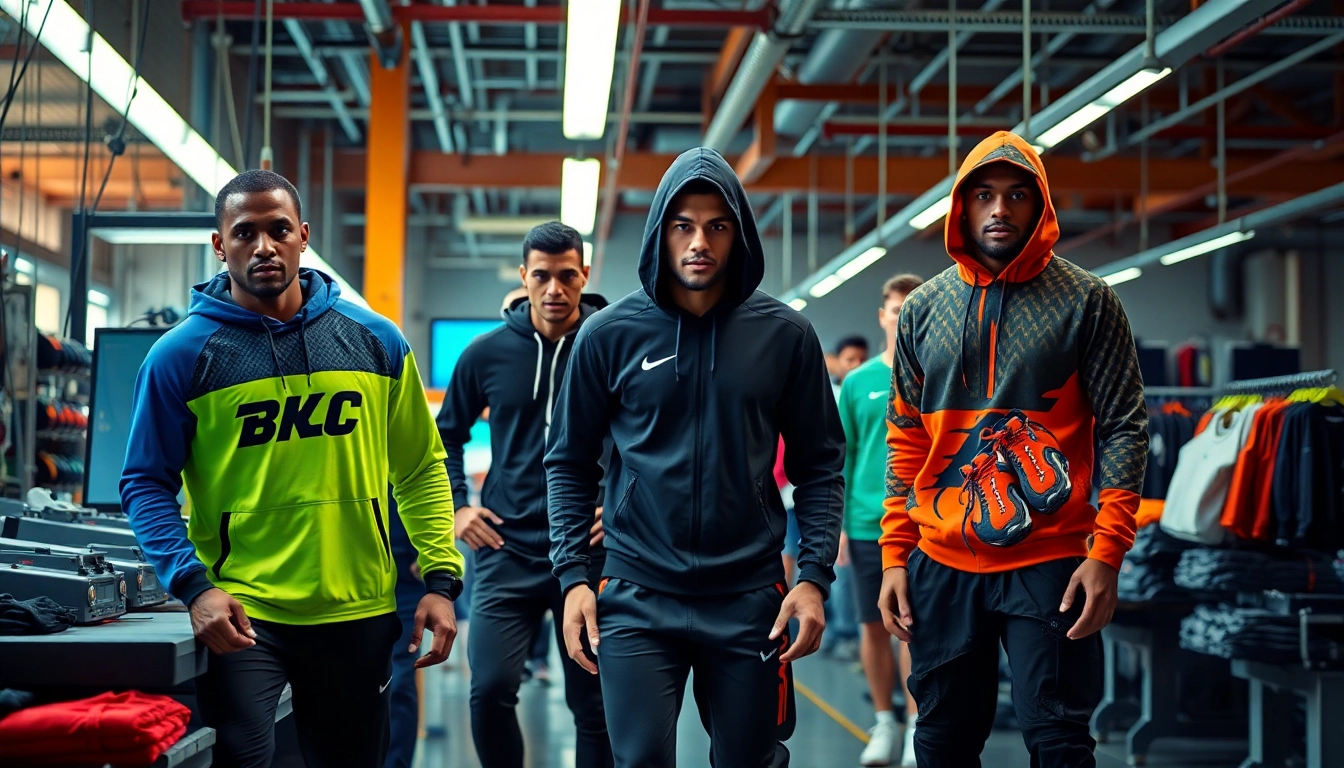Understanding the Role of Sportswear Manufacturers in the Apparel Industry
The sportswear industry has experienced exponential growth over the past few decades, driven by rising health consciousness, the global expansion of athletic events, and the increasing popularity of athleisure as a lifestyle choice. At the heart of this dynamic sector are sportswear manufacturers—companies that transform innovative designs and raw fabrics into functional, stylish athletic apparel. These manufacturers serve as the backbone of the industry, providing brands and teams with high-quality products that meet specific performance and aesthetic requirements.
Historical Evolution and Market Overview
The evolution of sportswear manufacturing traces back to the early 20th century, where the focus was primarily on function—providing athletes with durable, performance-enhancing gear. Over time, technological advancements introduced moisture-wicking fabrics, seamless construction, and customizable options, elevating sportswear from mere functionality to fashion statements. Currently, the global sportswear market is estimated to surpass $250 billion, with Asia-Pacific, notably Pakistan, emerging as a pivotal manufacturing hub due to cost efficiencies, skilled labor, and technological capabilities.
Pakistan, in particular, has established itself as a powerhouse in sportswear manufacturing, with cities like Sialkot and Karachi leading the way. Not only do these regions provide a vast supply of skilled manufacturers, but they also support innovation in sustainable fabrics and custom design solutions, positioning them as key players in the international supply chain.
Types of Sportswear Manufacturers and Their Specializations
Sportswear manufacturers can be broadly categorized based on their capabilities and market focus:
- OEM (Original Equipment Manufacturer): Companies that produce sportswear based on a brand’s specifications, often handling large-volume production for internationally recognized brands.
- Private Label Producers: Manufacturers that create custom sportswear brands under different labels, offering tailored design, branding, and packaging services.
- Specialty Manufacturers: Firms focusing on niche markets such as performance gear for specific sports, eco-friendly fabrics, or innovative textiles incorporating high-tech features.
- Custom Sportswear Manufacturers: Entities that emphasize personalized apparel for teams, clubs, and individual athletes, often integrating custom artwork, logos, and unique fits.
Leading manufacturers like Janletic Sports, Extreme Sportswear, and others in Pakistan exemplify these specializations, blending large-scale production with nuanced customization options to cater to global clients.
Factors Influencing Manufacturing Quality and Efficiency
Several critical factors determine the quality and efficiency of sportswear manufacturing:
- Fabric Technology: The use of high-performance, moisture-wicking, and durable textiles ensures longevity and athlete comfort.
- Manufacturing Processes: Advanced sewing techniques, seamless construction, and quality control protocols minimize defects and improve product consistency.
- Supply Chain Management: Efficient sourcing of raw materials and timely logistics streamline production schedules and cost management.
- Skilled Workforce: Trained artisans and technicians adept at handling complex designs and assembly contribute significantly to quality output.
For instance, companies in Pakistan leverage decades of craftsmanship combined with modern machinery to produce high-performance apparel with minimal defects, fulfilling international standards and client expectations.
How to Choose a Reliable Sportswear Manufacturer
Assessing Manufacturing Capabilities and Product Quality
Start by evaluating a manufacturer’s portfolio, certifications, and quality assurance processes. Request samples and review their compliance with international quality standards such as ISO 9001 or OEKO-TEX. A reliable manufacturer will provide transparent documentation of their testing procedures, fabric sourcing, and quality control measures.
Evaluating Customization Options and Design Flexibility
Flexibility in design is crucial for brands looking to differentiate their products. Choose manufacturers that offer a broad range of customization options, including fabric choices, fit, color schemes, printing, and embroidery. It’s essential to confirm their capacity for small-batch or large-scale orders, as well as their willingness to accommodate unique design requests.
Understanding Costs, Lead Times, and Compliance Standards
Cost considerations should include unit price, setup fees, and shipping costs. Lead times depend on order complexity and quantity—ensure your manufacturer can meet your timelines to avoid bottlenecks. Compliance with labor laws, environmental regulations, and safety standards is also paramount; verify their adherence through certifications and audit reports.
Best Practices for Partnering with Sportswear Manufacturers
Effective Communication and Clear Specifications
Clear communication reduces misunderstandings and streamlines production. Provide detailed technical drawings, fabric specifications, and quality benchmarks from the outset. Establish regular checkpoints and update channels to ensure alignment throughout the manufacturing process.
Sample Approvals and Quality Assurance Processes
Always review prototypes and samples before full-scale production. Implement a rigorous approval process, including multiple rounds if necessary, to confirm the final product meets your expectations. Use third-party inspectors or on-site quality teams for ongoing quality assurance during manufacturing.
Long-term Collaboration and Scalability Considerations
Build relationships based on transparency and mutual benefit. Explore options for scalable production to accommodate future growth, and discuss features such as flexible order quantities and rapid turnaround times. Long-term partnerships often yield better pricing, priority production slots, and shared innovation efforts.
Latest Trends and Innovations in Sportswear Manufacturing
Utilization of Sustainable and Eco-friendly Fabrics
Sustainability is becoming a key criterion for consumers and brands alike. Manufacturers are increasingly adopting recycled polyester, organic cotton, and biodegradable textiles. Companies like those in Pakistan are pioneering eco-friendly fabric production, combining sustainability with high performance.
Incorporation of Advanced Textile Technologies
Innovations such as moisture management, UV protection, and antibacterial finishes are now standard in high-end sportswear. Smart textiles embedding sensors for biometric feedback are also emerging, blending technology with apparel to enhance athletic performance.
Customization Trends Shaping Athlete and Team Preferences
Customization is moving beyond simple logos to include personalized cuts, team-specific color schemes, and performance-enhancing features tailored to individual sport requirements. Digital printing and sublimation techniques allow for intricate designs with rapid turnaround times, meeting modern consumer demands for uniqueness.
Performance Metrics and Case Studies of Successful Sportswear Manufacturers
Case Study: Leading Manufacturer’s Journey to Industry Dominance
For example, a prominent Pakistani sportswear manufacturer expanded its market share by investing in advanced manufacturing equipment and sustainable fabrics. Their strategic focus on quality control, innovation, and customer relations enabled them to secure major international contracts within five years, illustrating how technological adaptation and quality focus fuel growth.
Key Performance Indicators for Evaluating Manufacturer Success
- Product Defect Rate
- Lead Time Accuracy
- Order Fulfillment Rate
- Customer Satisfaction and Repeat Business
- Compliance Certifications and Audit Scores
Market Expansion Strategies and Innovation Successes
Top manufacturers are leveraging export channels, e-commerce platforms, and strategic alliances to penetrate new markets. Continuous investment in R&D for fabric innovation and manufacturing efficiency remains critical for maintaining competitive advantage.









